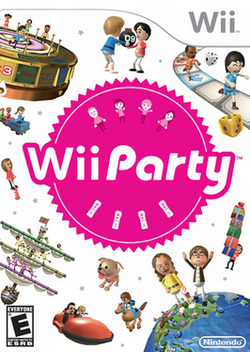| Wii Party | |
|---|---|
 North American cover art | |
| Developers | NDcube Nintendo SPD Production Group No. 4 |
| Publisher | Nintendo |
| Director | Shuichiro Nishiya |
| Producers | Atsushi Ikeda Hiroshi Sato |
| Series | Wii |
| Platform | Wii |
| Release | |
| Genre | Party |
| Modes | Single-player, multiplayer |
Wii Party [a] is a 2010 party video game developed by NDcube and published by Nintendo for the Wii. [4] The game heavily borrows gameplay elements from the Mario Party series. It is also the first game in the Wii series that Shigeru Miyamoto did not produce. [5] The game was released in Japan on July 8, 2010, [1] in North America on October 3, 2010, in Australia on October 7, 2010, and in Europe on October 8, 2010. Wii Party was revealed by Satoru Iwata in a Financial Results Briefing on May 7, 2010. [6] It received mixed reviews from critics and sold 9.35 million copies worldwide as of September 2021. A sequel, Wii Party U , was released for the Wii U on October 25, 2013.
